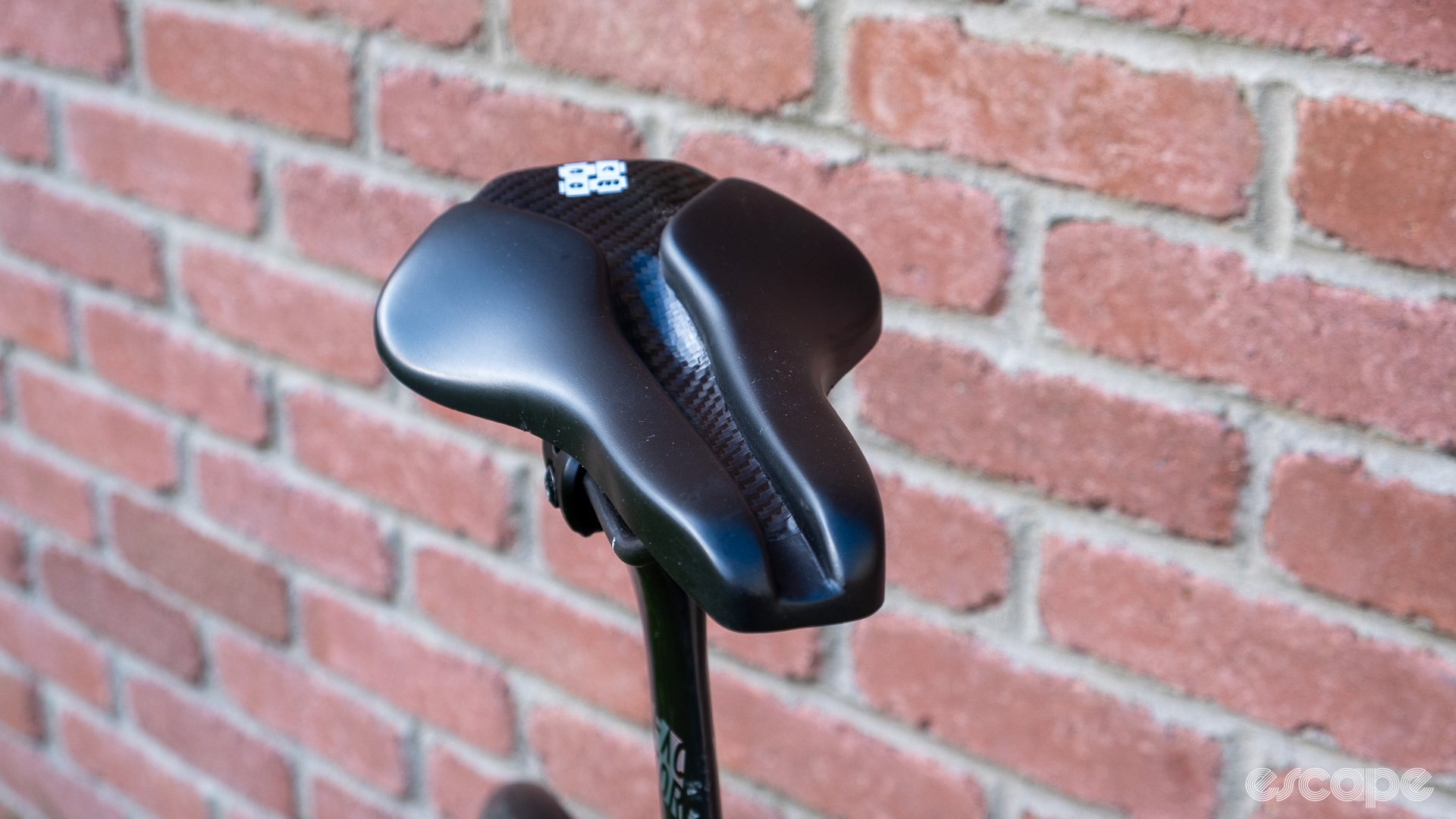We don’t often think of a saddle as a performance item. Sure, the wrong saddle or poor fit can lead to performance-sapping discomfort or injury, but using the saddle to promote – maybe even improve – performance is something we rarely hear about. But that’s precisely how Wove suggests we should think about saddles, and after a year or more of using both of its saddles, I tend to agree.
Wove’s philosophy puts the saddle at the centre of a bike fit, which is hardly revolutionary. Any good bike fitter will first dial in the saddle position and only then adjust the other contact points to fit the rider from there. However, Wove’s saddle-first philosophy is a little different. It uses a forward and level or nose-down saddle position to promote forward hip rotation, a more open hip angle (angle between the torso and thighs) and enable the rider to use their centre of mass to produce power in a more biomechanically efficient way. Wove’s saddle concept is born from years of bike fitting and is designed to accommodate what it refers to as the “progressive saddle position” this bike fitting philosophy promotes.
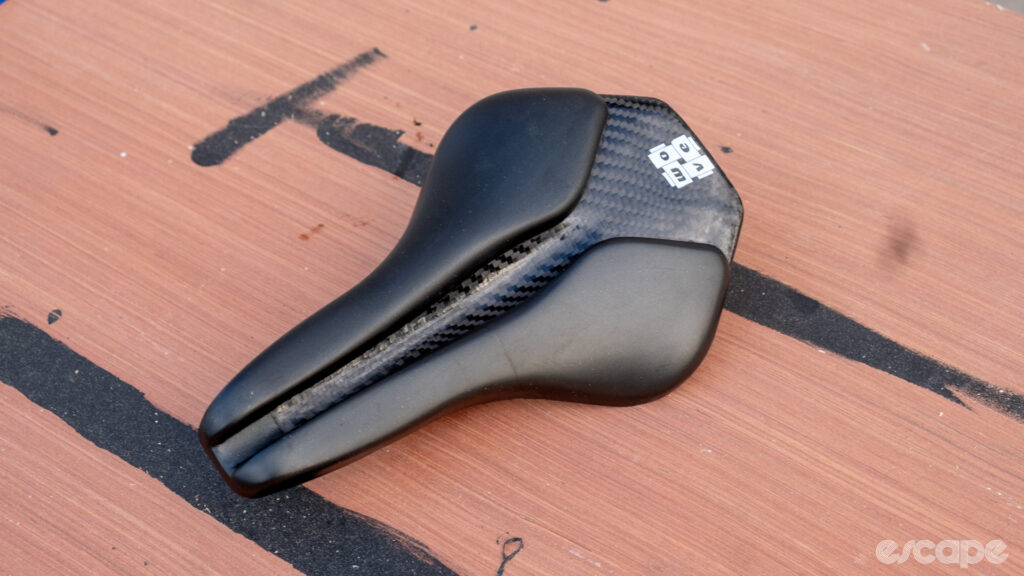

Wove is based in Boulder, Colorado, and it manufactures its saddles in the United States. The company takes its name from the carbon weave so evident on its saddles and the team of bike industry experts its founder wove together to create the Mags (road and gravel) and V8 (TT) saddles.
I’ve been using the company’s V8 time trial saddle for over a year, and more recently, the Mags road and gravel saddle reviewed here. It’s fair to say the saddles are a little different to more traditional saddles, and so Wove had initially provided some guidance on setup with the V8. That process went relatively smoothly with the TT-specific V8, but the short, curvy, and, frankly, kind of weird-looking Mags was a different story.
I’d been trying to apply my existing position with more traditional saddles to the Mags but struggling to translate the fore/aft position onto the particularly short Mags and the angle at which to set the nose. Long story short, that wasn’t going to work, and the ensuing back-and-forth with Wove’s founder, Nick [he doesn’t use a last name], helped me dial in a new position on the Mags. Fast forward a few months, and those conversations had me rethinking bike fit and the saddle’s role in promoting performance.
As such, that saddle-centric performance bike fitting is the topic of this week’s Performance Process podcast, as I invite Nick onto the show to discuss everything from his bike fitting philosophy to the evolution of Tadej Pogačar’s position.
Mags saddle review
That discussion aside, and moving onto the actual saddle review, the Mags is a lightweight, one-piece carbon saddle named after Magnolia Road in Boulder, Colorado, a road said to have it all and the test bed and inspiration for a “do it all” saddle. If you are like me, you might be asking: what makes a saddle a “do it all saddle” anyway? According to Nick, Wove decided it needed to create “zero soft-tissue pressure,” “zero thigh rubbing,” and zero chamois bunching. Sounds simple, huh? Oh, it must also support the rider in a more upright position when climbing but equally provide the support needed when rotating forward into an aero position, cranking out the watts “on the rivet.”
Those claims caught my attention. For a decade, I’ve preferred a nose-up saddle angle for the extra pelvic stability it offers, but I know, or more accurately, I feel that stability comes at a price, namely increased soft tissue pressure, posterior pelvic tilt and a heck of a lot more difficulty getting the torso low and aero over the front end.
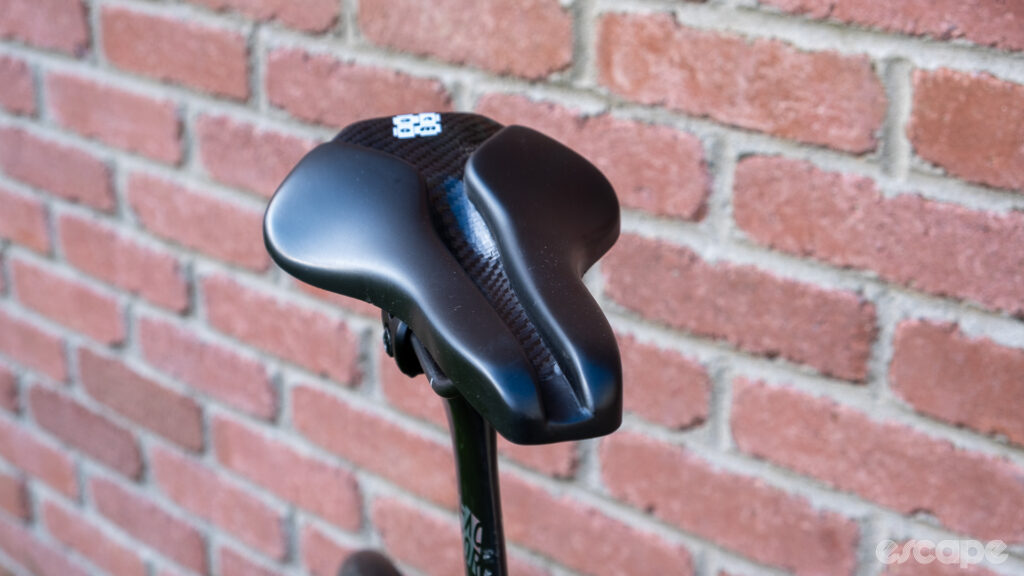
Wove was proposing a saddle that would offer increased pelvic support while simultaneously rotating the pelvis forward to aid with power delivery and adopt more aggressive positions without increasing soft tissue pressure… a difficult combination, to say the least; one that seemed even contradictory.
Before going any further, it is important to say that Wove claims the Mags is a unisex saddle, equally suitable for males and females. Wove doesn’t see the need to differentiate width, support, or cushioning for males and females.
Initial impressions were kind of “meh,” given the Mags wasn’t even all that groundbreaking on the face of it. Wove had created a short nose saddle, like practically every other saddle manufacturer had in the wake of Specialized’s success with the Power. But delving a bit deeper, it’s clear the Mags isn’t some imitation but a thoroughly considered, near re-imagination of what a saddle should be with a hefty, but arguably unnecessary, dollop of fancy details seemingly included purely to demonstrate the group of experts’ engineering capabilities.
The Mags is 146 mm wide at the rear, 30.5 mm wide at the nose, and just 24 cm long. That 24 cm length figure is a bit of a red herring, though, as it includes a carbon tail for the sole purpose of ensuring compliance with the UCI’s, you guessed it…. 24 cm minimum saddle length rule. The actual rideable section of the saddle measures just 20cm. Wove has effectively taken a short nose saddle and chopped that nose even shorter.
Wove claims this shorter overall usable length allows the rider to adopt a more upright position for climbing and more aggressive positions for faster riding on the flats without shuffling back or forth on the saddle, which inevitably results in changes to the effective saddle height and seat tube angle and thus a change in everything from knee extension to position relative to the bottom bracket.
Wove also claims the bare carbon tail provides a narrower attachment point for the carbon rails, a configuration which Wove says promotes flex through the wings of the saddle for increased comfort.
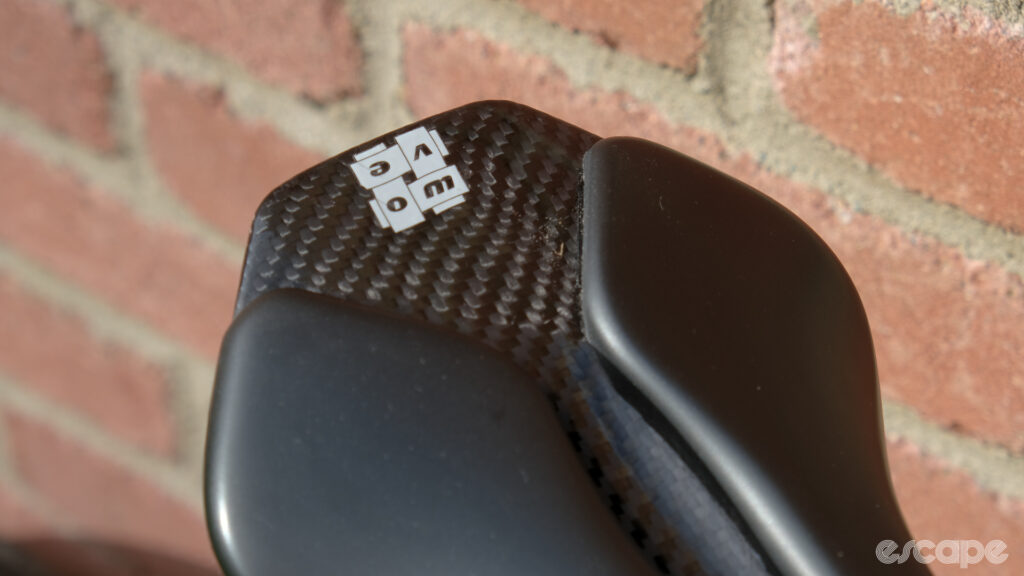
The wide rear supports the ischial tuberosities (sit bones) in upright riding positions, while the curved profile at the rear and a deep channel running the full length of the saddle promote forward hip rotation, aiding the rider in rotating the hips forward in line with the torso. especially in low and aerodynamic positions.
The transition from the 146 mm wide rear to the narrower (but still wider than most) nose tapers quickly, Wove says, to prevent thigh rub.
The Mags is among the few saddles promising soft-tissue pressure relief that does not feature a cutout. Instead, Wove has incorporated a 30.5mm wide dual-nose design, not dissimilar to the Selle SMP dual-nose saddles, developed to independently support the pubis while also allowing for a full-length, unobstructed, central channel included to relieve the soft-tissue pressure I know all too well from trying to rotate forward onto a single-nose saddle. This dual-nose, central channel concept provides the pelvic support of a level or upward nose along with the pressure relief of a nose-down saddle that promotes the pelvic rotation central to Wove’s performance saddle position philosophy.
The saddle features a polyurethane foam, while the cover material, also polyurethane, is smooth yet extremely grippy, to the point that Wove has since introduced a less grippy version. The foam and cover are produced together in a negative mould into which Wove first effectively paints the cover material while still in its liquid form before pouring the foam into the mould and finally pressing the carbon shell into it. This means Wove can dramatically reduce the thickness of the cover material, which it claims enhances the foam’s performance.
So that’s everything we can see from above the saddle; beneath all that is a one-piece carbon shell and uni-directional carbon rails. This one-piece carbon construction helps keep the claimed weight at a mere 126 grams (our review saddle weighted 117.5 grams), but perhaps more surprising is the shape of those carbon rails.
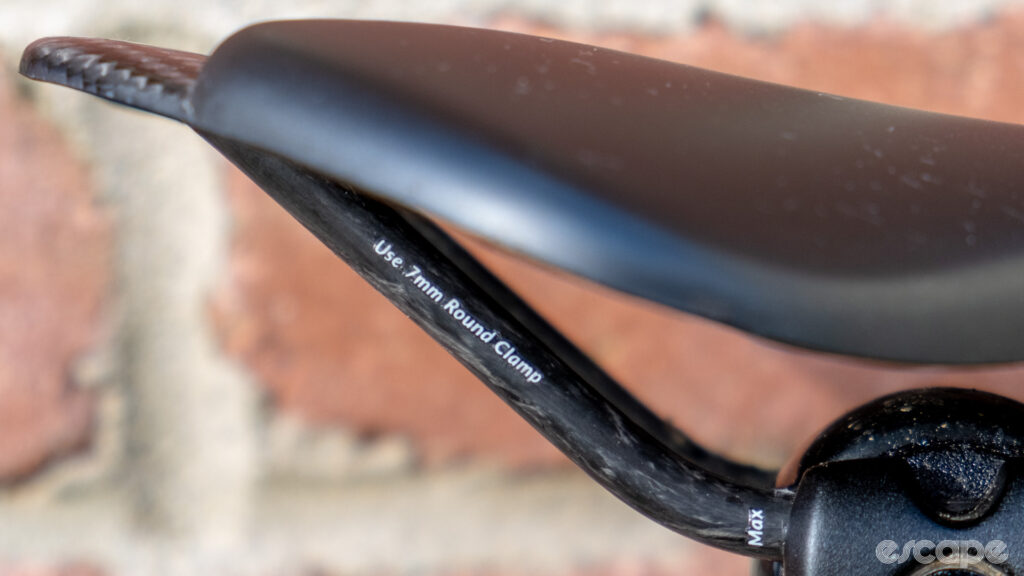
Typically, carbon rail saddles feature a 7×9 mm rail. This oval-shaped shape helps manufacture a carbon rail strong enough to support the rider’s weight over smooth roads and impacts. 7×9 rail-compatible seat post clamps are now commonplace, even delivered along with 7 mm round clamps for saddles with alloy or steel rails. So why, then, would Wove make a 7 mm round carbon rail? The answer is mostly because they could, and they believed that in doing so, they could demonstrate their manufacturing capabilities.
Are round carbon rails safe? Wove says yes and explains that while the ISO standards test for a bicycle saddle calls for 200,000 repetitions with a 220 lbs weight, Wove says it tested its rails to 320 lbs for 200,000 reps.
The carbon shell and rails also come with a lifetime warranty on any defect in materials or workmanship. The foam and cover material are covered for one year from purchase for the original owner, but Wove does offer a foam padding and cover replacement service after that first year for US$100. Related, the brand also offers a free two-week demo program and a 30-return policy. And they’d need to really, when you consider the price.
Yes, if this all sounded too good to be true so far, there is one catch. The price! At US$595, it is not just the rotated pelvis that will help open up your hip angle; the drastic reduction in the width of your wallet from all those missing dollars should also free up some space in your trouser pockets to rotate your hips into.
Wove does make some claims on its website about the weight saving of the Mags alone, providing better gram:dollar savings, I’m not going to get into those because 1) a US$595 saddle is simply way beyond most riders’ budgets and such comparisons do not help in that regard and 2) I really don’t see the value in the Mags as related to its light weight. As such, I’d just prefer to see a non-carbon or in some way more affordable version of the Mags for those on a budget.
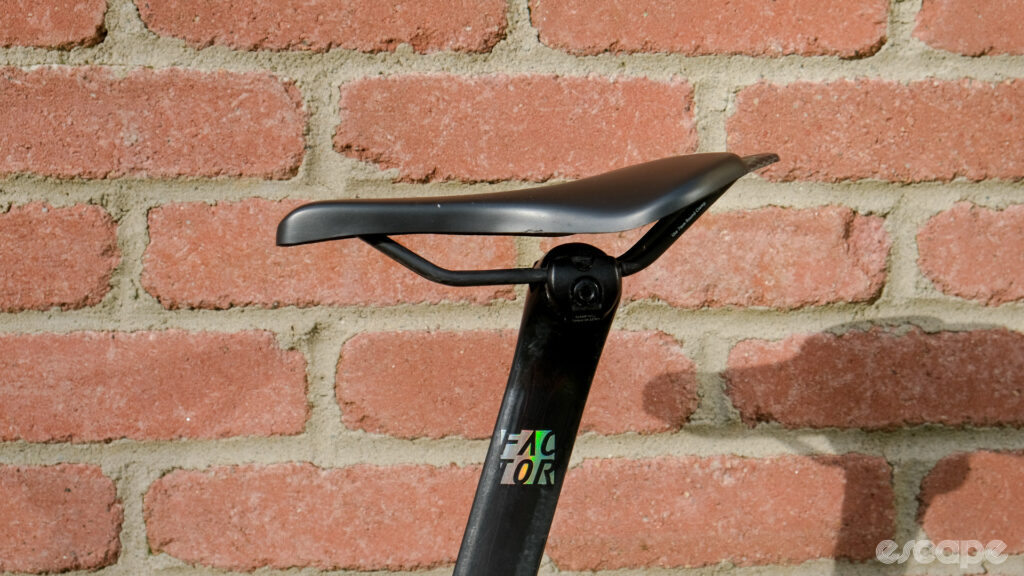
Having ridden the Mags and adopted Wove’s fit philosophy, I can justify the spend on an uber-expensive saddle for those considering similar or greater outlays on some other performance-hacking piece of equipment. It’d be impossible to put an aero claim or wattage-saving figure on a Wove saddle or any saddle, but arguably, the potential aero savings from how it enables more aggressive positions is as significant as or greater than any other intervention. But as mentioned earlier, a poor bike fit will cost you watts in power production, comfort, and even aerodynamics. With the Mags, I didn’t just find a comfortable saddle, but I could feel that promised pelvic support. I also noticed myself able to lean further into more aggressive positions without the soft tissue pressure one might expect.
Furthermore, in adopting Wove’s fit philosophy and a more forward and nose-down saddle position, I could feel the benefits of rotating my pelvis forward in alignment with my torso. This was evident in a sensation of a smoother pedal stroke, better, more efficient power delivery, and a more sustainable “Aero” position.
The nose is extremely wide in comparison to most saddles, but the quick taper Wove added to the transition from rear to front works for me and so I didn’t experience any thigh rub. Again, that width combined with the foam – which tapers deeper along its length towards the front – and grip combine to provide a sensation of a saddle I can really push into. I can lean into the “riding on the rivet” position, but without the feeling of sliding or falling forward I get on other saddles where I have to tilt the nose much further down to achieve the same pressure relief.
At least in my opinion, the Mags isn’t exactly a traditionally pretty saddle, and combined with slamming it all the way forward, it’s at risk of upsetting the aesthetics police (AKA the UCI). Furthermore, in adopting a more forward saddle position, I am left with the problem of switching to longer stems, quite the job on the modern, internally routed front ends.
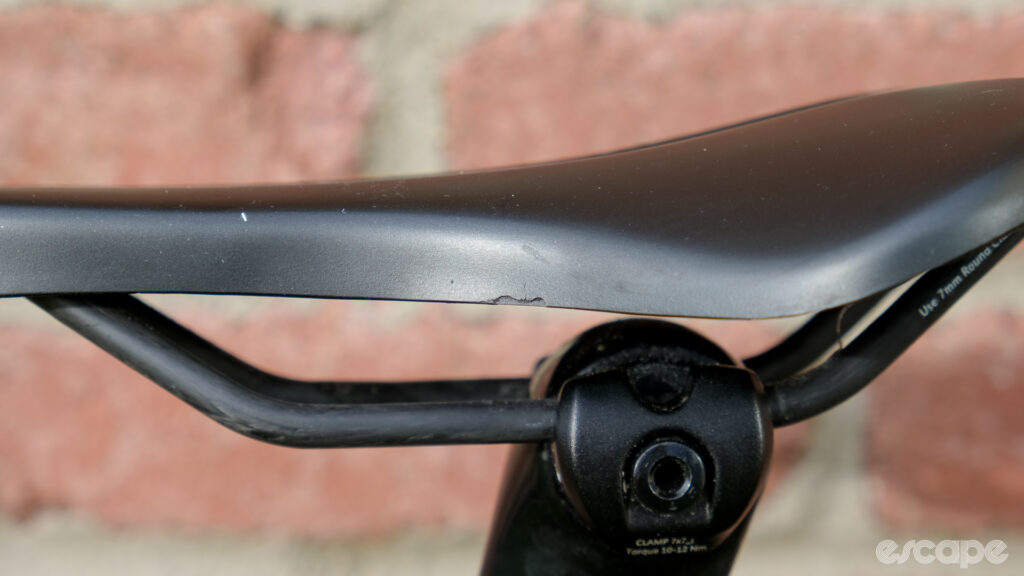
The saddle itself is not without fault, either. The trade-off of such a biomechanically efficient position on such a short saddle is a definite reduction in surface area upon which to shift your weight when descending or cornering at speed. The upshot is that it removes the need to slide forward under the most intense efforts. Perhaps it’s tradition’s last-grasp hold on me, but I do also still long to try the Mags in a slightly narrower width option. I didn’t get any rubbing and the Mags feels narrower than it is, but I’ve always got along best with narrower saddles and feel a narrower take on the same concept would just suit me better.
I am a fan of that grippy cover, something my colleague James Huang – who also spent some time on the Mags – wasn’t such a fan of. But it is starting to show the first signs of wear along the side of the nose, specifically where I’ve been placing the 80 mm tool I use for replicating positions across multiple bikes. Wove admits it has identified a small issue with the cover material lifting on some saddles but is already implementing a fix.
James, much more adept at off-road riding than I, also noted that while Wove approves the Mags for use on gravel, he reported that he would avoid using it on any technical gravel that requires the rider to get behind the saddle on steep descents as the carbon tail is … “not friendly.”
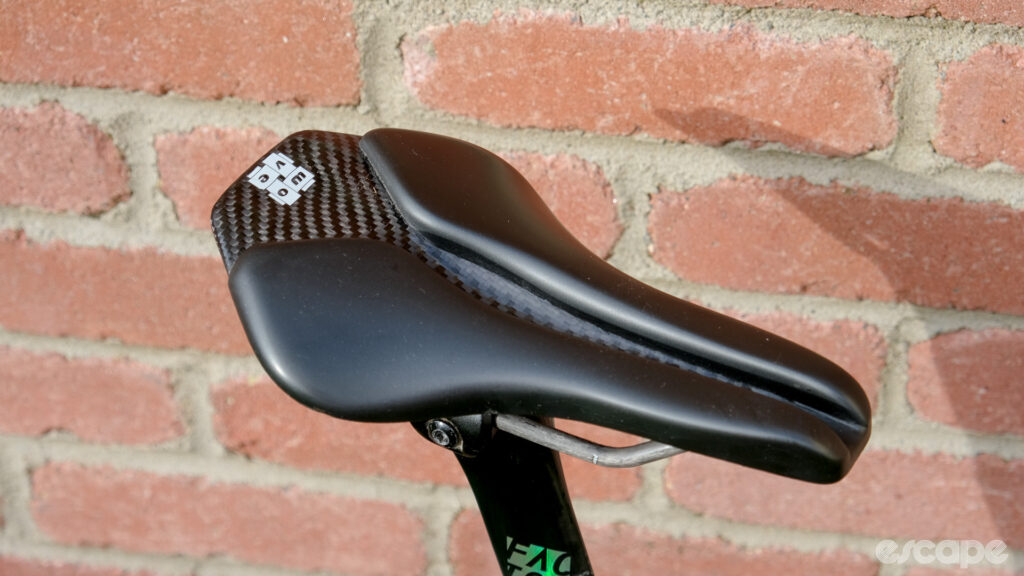
There was also an issue with the early batch of V8 saddles, amongst which mine was one, in which the manufacturer had missed tolerances on those round carbon rails, causing some to crack. Wove has since changed tooling, claiming the issue is now resolved. There has been no such issue with the Mags on review.
If the fit philosophy is a major part of Wove’s entire premise, it must also be said that I was able to achieve most of that with other saddles, and those like the SMP mentioned earlier will offer similar soft tissue pressure relief.
All that is to say: colour me magnolia; I am converted. That said, at this price and such a performance centred product, I will not be rushing out to replace every saddle on every bike with a Wove. I will reach for the Wove when I’m likely to be reaching for “the rivet,” but there are other saddles I get on just fine with. Furthermore, it is still a saddle and, as we all know, what works for one rider might feel terrible for another.
What I will be doing is adopting Wove’s “progressive” forward and nose down saddle position philosophy across all the bikes that come through my workshop.
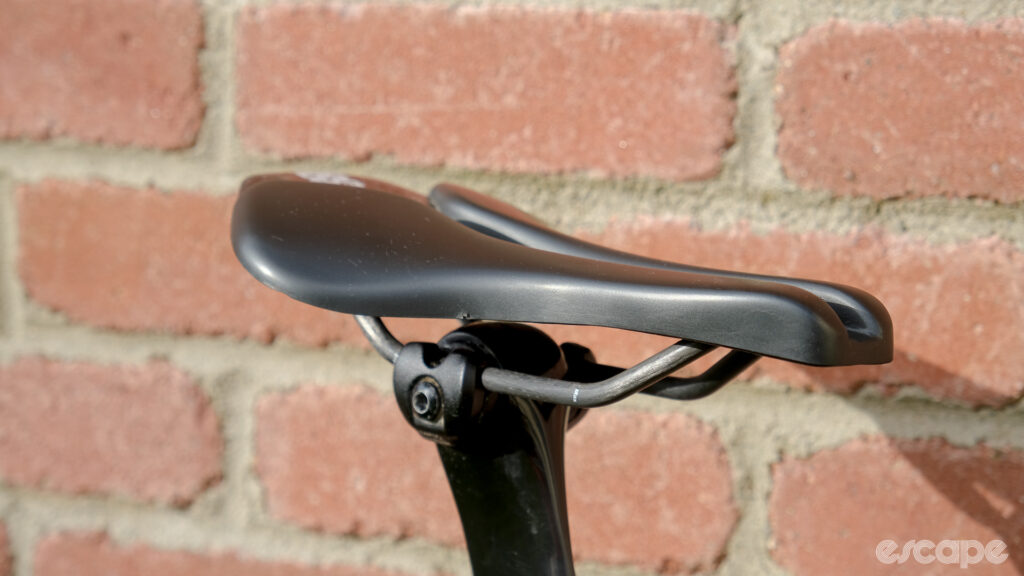
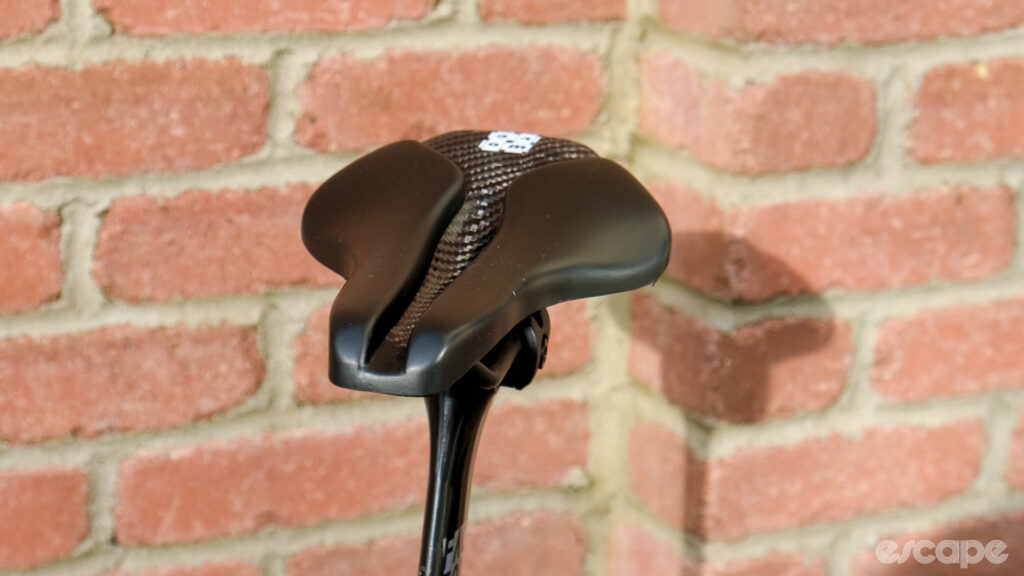
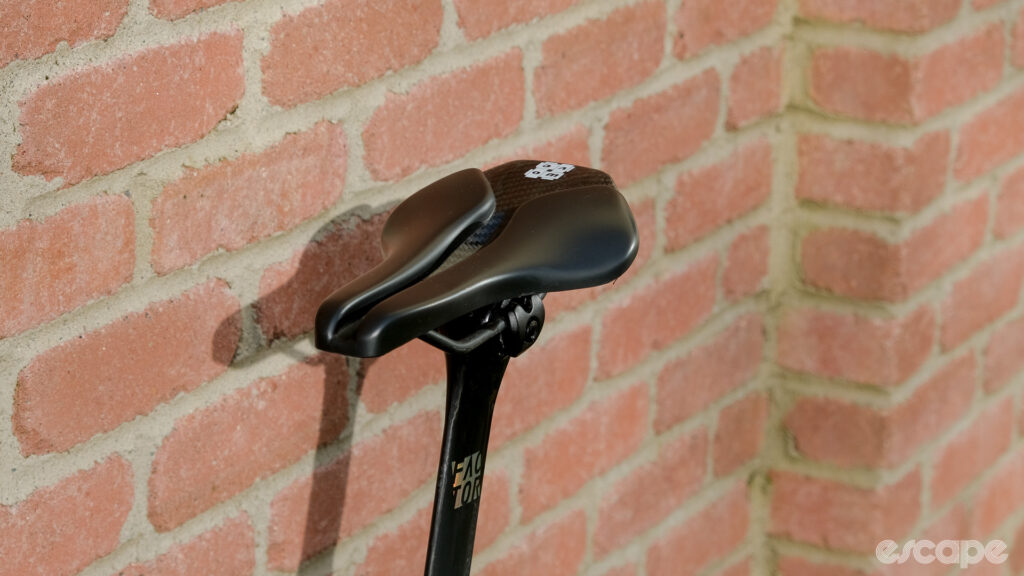
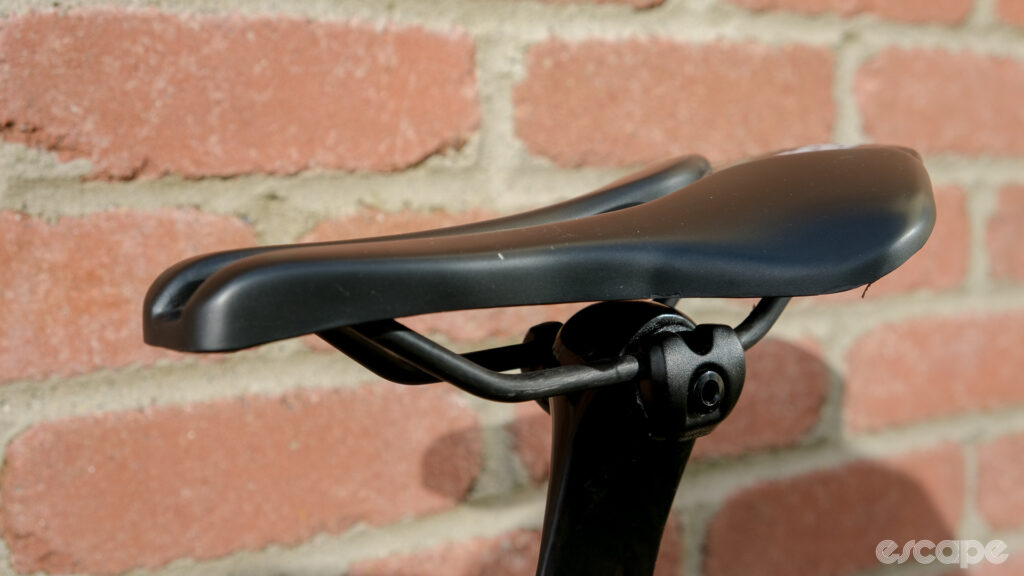
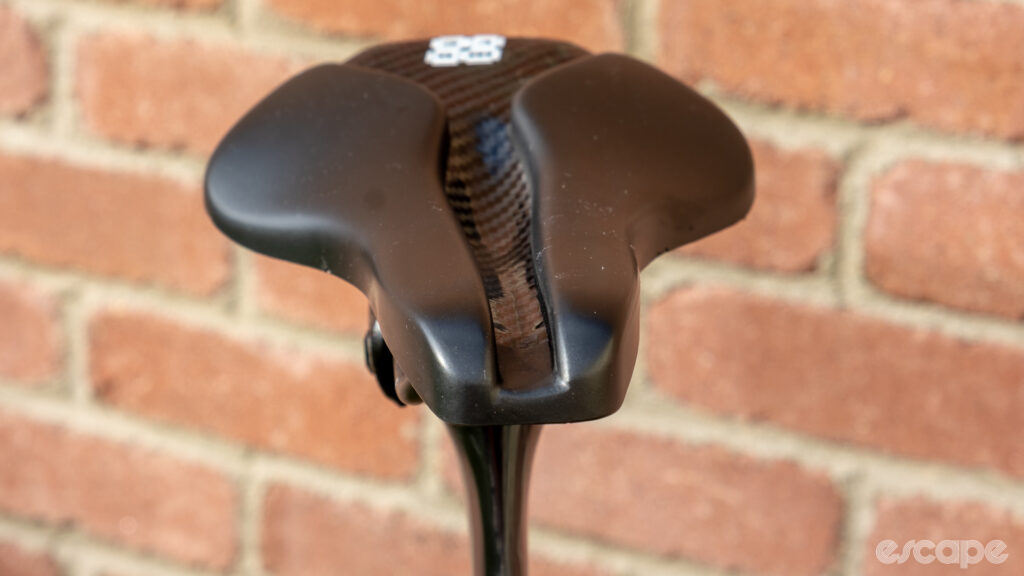
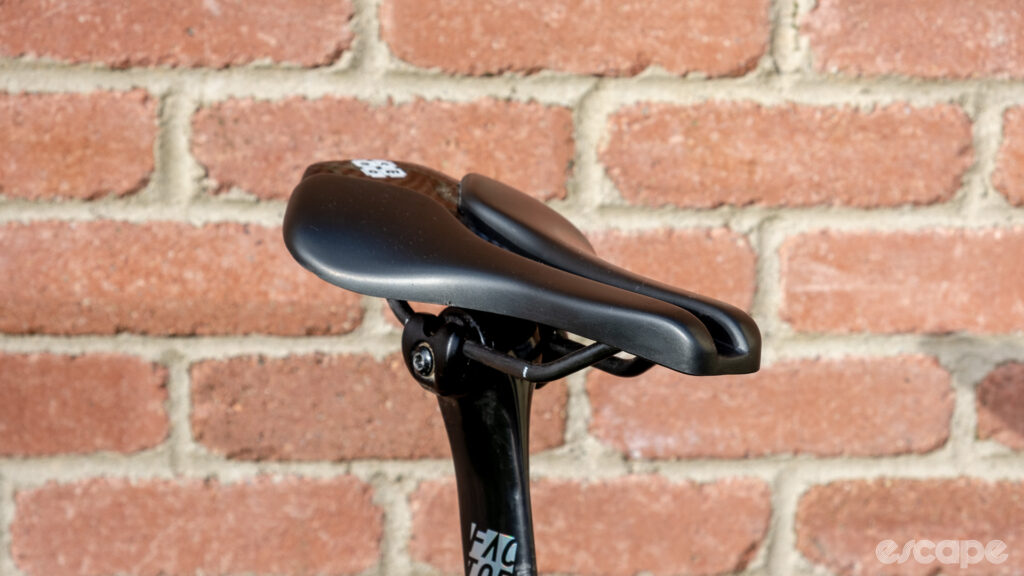
Did we do a good job with this story?
